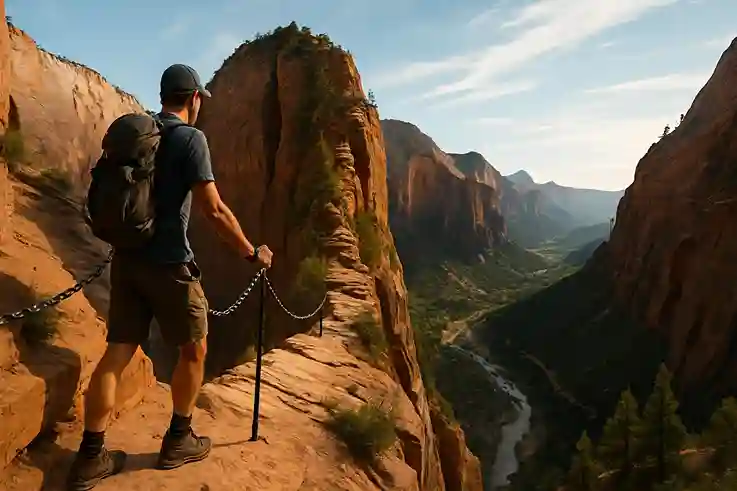First Time Campers: Simple Gear List for Beginners
First time campers often feel overwhelmed deciding what gear to bring, what to leave behind, and how to stay prepared in the great outdoors. It’s completely normal. Many beginners overpack or forget essentials that truly matter.
This guide is for first time campers in the U.S. It gives you a simple, stress-free checklist to follow. Whether you’re going with family, friends, or solo, the goal is the same. Be ready. Stay safe. Enjoy every moment.
We’ll cover the gear you actually need—from tents and cookware to first aid and comfort items. Nothing extra. Nothing missing. Just the right list to make your first trip smooth, safe, and memorable.
Shelter & Sleeping Gear
Your shelter is your home away from home. For first time campers, comfort and simplicity matter most.
Tent
Choose a tent that’s easy to set up. Look for one with clear instructions and color-coded poles. A 2- or 4-person tent is usually enough. Make sure it’s waterproof or comes with a rainfly.
✅ Tip: Practice setting it up in your backyard before your trip.
⚠️ Common Mistake: Don’t buy a massive tent. It’s harder to set up and pack down.
Ground Tarp or Footprint
Place a tarp or footprint under your tent. It protects from moisture and sharp objects on the ground. It also helps your tent last longer.
Sleeping Bag
Pick one based on the season. For summer, a lightweight bag works. For fall or colder nights, look for a bag rated for 30°F or below. Always check the temperature rating.
Sleeping Pad or Air Mattress
Never sleep directly on the ground. A pad or air mattress adds comfort and insulation. Foam pads are lightweight and easy to pack. Air mattresses are cushier but need inflation.
Pillow or Inflatable Travel Pillow
Don’t forget a pillow. Even a small travel pillow makes a big difference in sleep quality.
Cooking & Food Essentials
Cooking outdoors doesn’t need to be complicated. For first time campers, stick to the basics and plan simple meals.
Portable Stove or Grill
A small camp stove or portable grill is a must. Choose one that’s compact and easy to use. Most run on small gas canisters.
Fuel + Lighter or Matches
Don’t forget fuel. Make sure it matches your stove type. Bring a lighter and waterproof matches as backups. Pack extras—wind and damp air can make lighting tricky.
⚠️ Mistake: Many beginners bring the stove but forget the fuel.
Cookware (Pot, Pan, Utensils)
One pot, one pan, and a basic spatula or spoon will do. Non-stick pans are easier to clean. Choose lightweight, durable items made for camping.
Biodegradable Soap & Sponge
Clean up right after cooking. Use eco-friendly soap and a small sponge. Bring a small towel to dry dishes.
Cooler + Food Storage Containers
A cooler keeps perishables fresh. Pack food in reusable containers to avoid spills. Use ice packs or frozen water bottles to stay cold longer.
Reusable Water Bottles or Hydration Packs
Stay hydrated. Bring a refillable bottle for each person. If you’ll be hiking, a hydration pack with a straw makes it easier to sip as you move.
✅ Tip: Plan 1-pan meals to cut down on gear and cleanup.
⚠️ Mistake: Skipping fuel or forgetting soap leads to stress later.
Clothing & Personal Gear
Packing the right clothes keeps you comfortable in all weather. First time campers should focus on layering and staying dry.
Weather-Appropriate Clothing (Layering)
Dress in layers. Start with a moisture-wicking base layer, then add a warm layer (like fleece), and top it off with a weather-resistant jacket. Layers help you adjust as temperatures change.
Rain Jacket or Poncho
Rain is common outdoors. A lightweight, waterproof jacket or poncho can make a big difference. Pack one even if the forecast looks clear.
Extra Socks and Underwear
Always bring extra. Wet socks cause blisters. Dry underlayers are essential for comfort, especially on multi-day trips.
✅ Tip: Always pack extra dry socks.
Sturdy Shoes or Hiking Boots
Wear broken-in shoes with good grip. Hiking boots or trail shoes are best for uneven ground. Don’t bring new shoes—blisters will ruin your trip.
Hat, Sunglasses, Sunscreen
Protect yourself from the sun. A wide-brim hat, UV-blocking sunglasses, and SPF 30+ sunscreen are musts—even on cloudy days.
Toiletries (Toothbrush, Wipes, Hand Sanitizer)
Keep it simple. Pack travel-size items. Wipes help with quick cleaning when showers aren’t available. Hand sanitizer is essential before meals.
⚠️ Mistake: Avoid cotton. It holds moisture and dries slowly. Choose synthetic or wool fabrics instead.
Safety & Navigation Essentials
Safety should always come first. First time campers should be ready for small injuries, low light, and getting lost.
First Aid Kit
Bring a basic kit with bandages, antiseptic wipes, pain relievers, tweezers, and allergy meds. You can buy a pre-made kit or build your own.
Flashlights or Headlamps + Extra Batteries
It gets dark fast at camp. A headlamp keeps your hands free. Flashlights are great backups. Pack extra batteries—you’ll need them.
Map, Compass, or GPS App
Know where you are. Don’t rely only on phone signals. Print a map of the area. A compass or offline GPS app can help if you lose service.
Pocketknife or Multi-Tool
A small multi-tool comes in handy for cutting rope, opening cans, or fixing gear. Choose one with a blade, scissors, and bottle opener.
Whistle
A whistle is a small but powerful safety tool. Three short blasts is the universal signal for help. Attach it to your backpack or keychain.
Emergency Blanket
Thin, lightweight, and heat-reflective, an emergency blanket can help in cold or wet conditions. Keep one in your daypack just in case.
✅ Tip: Store all safety gear in one easy-to-reach pouch.
⚠️ Mistake: Don’t skip this gear—it’s better to have it and not need it.
Packing & Organization Tips
Good packing makes your camping trip smoother. It saves time, space, and stress—especially for first time campers.
Use Duffel Bags or Plastic Bins
Duffel bags are flexible and easy to carry. Plastic bins stack well and keep things dry. Use what works best for your car and campsite.
Keep Frequently Used Gear Accessible
Don’t bury your flashlight or rain jacket at the bottom of your bag. Keep daily items at the top or in an outside pocket for quick access.
Label or Color-Code by Category
Group similar items together. Use colored bags or labels—blue for kitchen gear, green for clothes, red for safety. It helps you find things fast, even in the dark.
✅ Tip: Unpack into bins or crates at your campsite to stay organized.
⚠️ Mistake: Tossing everything into one bag makes setup—and cleanup—a headache.
Final Checklist for First Time Campers
| Category | Essential Items |
|---|---|
| Shelter & Sleeping | Tent, ground tarp, sleeping bag, sleeping pad/air mattress, pillow |
| Cooking & Food | Portable stove/grill, fuel, lighter/matches, pot/pan, utensils, cooler, water bottles |
| Cleaning Supplies | Biodegradable soap, sponge, towel, food containers |
| Clothing & Personal | Layered clothing, rain jacket, extra socks/underwear, sturdy shoes, toiletries |
| Sun & Bug Protection | Hat, sunglasses, sunscreen, bug spray |
| Safety Essentials | First aid kit, flashlight/headlamp, batteries, whistle, emergency blanket |
| Navigation Tools | Map, compass, GPS app |
| Tools & Extras | Multi-tool, power bank, camp chair (optional), games (optional) |
| Organization | Duffel bags or bins, labeled containers, color-coded packing |
✅ Tip: Print or screenshot this list and check off items as you pack.
⚠️ Reminder: Don’t overpack—bring only what you’ll use.
❓ Frequently Asked Questions (FAQs)
1. What is the best tent size for first time campers?
A 2-person tent is perfect for solo campers or two people with minimal gear. For extra comfort, size up one person (e.g., a 4-person tent for 3 campers). Make sure it’s easy to set up.
2. Do I need special food, or can I bring homemade meals?
You can bring homemade meals, but keep it simple. Pre-cooked or one-pan meals work best. Avoid anything that needs long cooking or refrigeration unless you have a cooler.
3. How do I keep food safe from animals?
Use sealed containers or a cooler with locking latches. Never leave food out overnight. Store all food, trash, and scented items in your car or a bear-safe box if available.
4. What’s the one thing most first time campers forget?
Fuel for the stove! Others include a flashlight, trash bags, or a sponge for cleanup. Review your checklist before you leave.
5. Is it safe to camp alone for the first time?
It can be, if you choose a well-maintained campground with cell service. Let someone know your location and check in. For true beginners, starting with a group is a safer option.
Conclusion + Call to Action
Camping for the first time doesn’t have to be stressful. With the right gear and a little planning, first time campers can enjoy a safe, fun, and unforgettable outdoor experience.
Remember: pack smart, keep it simple, and focus on the essentials. You don’t need fancy equipment—just the right tools to stay comfortable and prepared.
✅ Ready to go?
Save this checklist, share it with your camping crew, and start planning your first adventure today!
Have questions or tips for fellow beginners? Drop them in the comments below!
📥 Download the Gear Checklist (PDF)
Want a printable version?
Click here to download the full checklist and take it with you on your trip!

Silvia Heart is a lifestyle and wellness writer with a background in apparel and a degree in fashion. She blends creativity with practical insights, guiding readers toward intentional, balanced living. Through her approachable style and thoughtful storytelling, Silvia inspires her community to embrace both everyday joy and personal growth.


